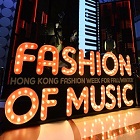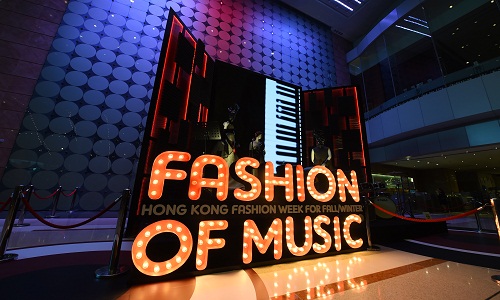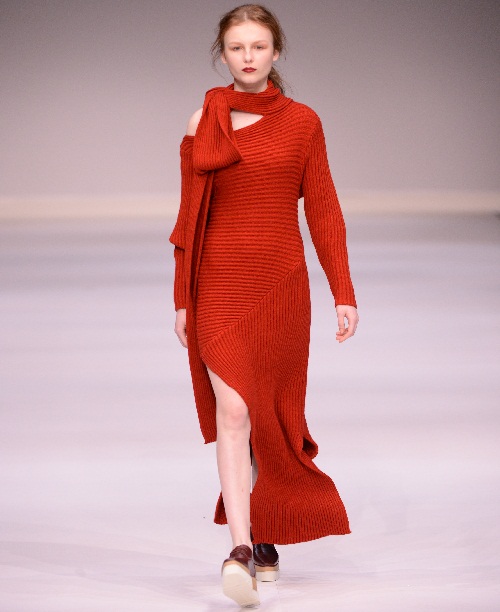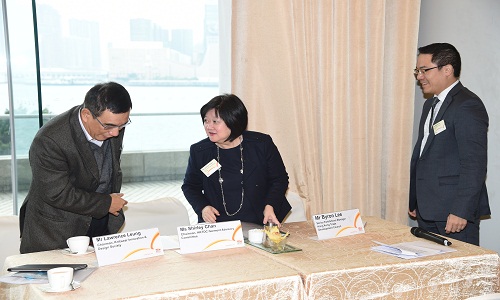FW
Pakistan Hosiery Manufacturers & Exporters Association (PHMA) have urged the Federal Board of Revenue (FBR) to ban import of fabric from the United Arab Emirates (UAE), in a significant move to salvage the local fabric industry. According to PHMA, the unbridled import of fabric from UAE, though there are no manufacturing units in the country, is adversely hurting the local industry. This is all an Indian fabric which is being imported in Pakistan via Dubai, according to the PHMA letter that it wrote to chairman FBR Nisar Muhammad Khan. .
The letter urged the Pakistan government to investigate the Indian fabric trade from UAE and demanded UAE’s exporters to produce the Certificate of Origin of the fabric that is imported in Pakistan. For the survival of the local industry, the government should ban the import of fabric from UAE as there are no fabric manufacturing units in UAE. This will save a large numbers of weaving units in Pakistan that are currently non-functional or about to close down due to rampant import of Indian fabric, the letter added. .
Value-added textile sector has been clashing with the FBR because of non-issuance of custom rebate claims of exporters that have been held for few years. Exporters are of the opinion that the soaring rebate and refund claims have made it impossible for them to meet their foreign commitments due to severe liquidity crisis.
Japanese textile companies are flocking to Vietnam. Many of these manufacturers are hoping to get a boost from the proposed Trans-Pacific Partnership free trade agreement, to which Vietnam is a party and are ramping up production and exports in the Southeast Asian country with an eye toward boosting US-bound shipments.
The excellent technical capability of Vietnamese workers is a big draw, even if labor costs are higher than those in Bangladesh or Myanmar. Deregulation efforts are adding to the country's appeal. Last year, for example, Vietnam began allowing foreigners to own property for 100 years, as well as hold 100 per cent stake in local publicly traded companies, up from the previous 49 per cent.
Further enhancing the country’s drawing power is the fact that in addition to being a member of the TPP and the Asean economic community, Vietnam also has free trade agreements with South Korea and the European Union. Major Japanese trader Itochu has established a weaving mill in Vietnam with a monthly capacity of 5,00,000 meters of fabric. Itochu also produces shirts at the facility under other brands and ships them to the US and elsewhere. Japanese cotton spinner Shikibo will lower output at its Chinese sewing factory and increase production at a partner plant in Vietnam.
Texworld Paris will be held from February 15 to 18, 2016. This is a trade fair for professionals from the fashion industry. It will present new concepts, which will provide a clearer, better proportioned offering, divided into distinct sections.
The trade fair is seeing 30 per cent increase in the number for exhibitors from clothing and textile accessories manufacturers, currently more than 230 exhibitors are listed. China will have a strong presence with a varied range. Around 10 exhibitors from Hong Kong will showcase at Texworld. Taiwan will be represented by specialists in outerwear and Pakistan will be more oriented towards casual wear. Indian exhibitors will be multifaceted.
Casual wear will be partly represented by Bangladesh, which will be attending the February fair for the first time. Japanese producers of men’s and women’s knitwear will also attend. There will be an exhibit of shawls and scarves. This is designed to be an accessories showcase. It is diversifying towards finished products other than shawls, scarves and stoles, but staying with accessories. And Indian manufacturers, who are major specialists, will be responsible for 30 per cent of the offer.
www.texworld.messefrankfurt.com/
The Trans-Pacific Partnership deal will give double-digit boost to exports from Vietnam, Japan and Malaysia by 2030. Exports from Vietnam are expected to rise by 30.1 per cent, from Japan by 23.2 per cent, and from Malaysia by 20.1 per cent. Japan, a major exporter of electronics, would receive significant benefits as TPP will cut 87 per cent of tariffs on industrial products in the 11 other countries. Japanese exports of agricultural produce may also increase thanks to special measures to be put in place under the accord, such as a tariff-free import quota to be set aside for Japanese beef.
Outside Asia, double-digit rises are forecast for New Zealand at 12.8 per cent and Peru at 10.3 per cent. Increases for the remaining countries range from 9.2 per cent for the United States, followed by Canada’s 7 per cent, Chile’s 5.3 per cent, Australia’s 5 per cent, and Mexico’s 4.7 per cent.
The United States and 11 other countries reached agreement on TPP in October. The accord is now pending ratification and an official signing. The pact would cover some 40 per cent of the global economy. TPP is expected to boost the combined gross domestic product of the whole TPP zone by 1.1 per cent by 2030.
https://ustr.gov/tpp/
Primark is an Irish fast fashion retailer. It’s focused on teens and produces low-priced, selfie-friendly clothes like dresses, shoes and bags. It’s known for its cheap mini-skirts and club-ready clothes.For summer it has everything from beach cover-ups, like tasseled kimonos and kaftans, to chic swimwear and bargain bikinis for every body shape. There are tops, leggings and bras in luxe brights and pastels.
The brand has built up its reputation with the newest designs, jazzy stores and media promotion. It doesn’t sell online and rarely advertises. Among its activities is cleaning up its supply chain in Bangladesh, Pakistan, Burma, Ethiopia and India. In those countries it is engaged in the health and general welfare of workers in the textile industry. In addition, attempts are made to stimulate the local economy of the countries.
Primark feels it is important that the people who make its products can work in good conditions and are treated properly and receive a fair wage. Like all fast fashion, cheap clothes can cost a lot with respects to workplace safety and workers’ rights. Primark produces its low-cost clothes in Bangladesh and was one of the many retailers using Rana Plaza when the building collapsed in 2013, killing over 1000 people.
https://www.primark.com/
"The 47th Hong Kong Fashion Week for Fall/Winter opened yesterday to full house. Organised by HKTDC, the four-day event from January 18 to 21 features more than 1,500 exhibitors from 22 countries who are showcasing their latest designs, collections from international brands, fabrics and accessories. The theme of the show this year is: Fashion of Music. The theme blends different musical genres in ways that complement various styles of fashion and accessories. A dedicated fashion avenue in the fair has been created to depict this theme through fashion shows."

The 47th Hong Kong Fashion Week for Fall/Winter opened yesterday to full house. Organised by HKTDC, the four-day event from January 18 to 21 features more than 1,500 exhibitors from 22 countries who are showcasing their latest designs, collections from international brands, fabrics and accessories. The theme of the show this year is: Fashion of Music. The theme blends different musical genres in ways that complement various styles of fashion and accessories. A dedicated fashion avenue in the fair has been created to depict this theme through fashion shows.
The fair will see around 30 fashion events, including fashion shows, fashion parades, seminars, forums, to present the latest fashion collections and market intelligence.
Latest fashion creations on the runway
More than 10 fashion, designer and brand collection shows are being organised during the four-day fair. Fashionally, webplatform for local fashion communication presented on the first day, two fashion shows for upcoming local talents, featuring designers from the Hong Kong Young Fashion Designers’ Contest (YDC). Fashionally Collection #5 Menswear displays menswear for the 2016 Fall/Winter season, whereas Fashionally Collection #6 launched a collection of women’s wear for the 2016 Fall/Winter, with participating designers including 112 mountainyam (designer: Mountain Yam), Blind by JW (designer: Walter Kong, Jessica Lau), Effie Hung, FromClothingOf (designer: Shirley Wong), HANG (designer: Mim Mak), KEVIN HO, Lapeewee (designer: Yannes Wong), and Sherman Kwan.
A platform to explore new trends
The first day also saw a panel discussion on ‘circular business models’ as well as a session on net-a-porter, a leading game changer online luxury fashion retailer. A series of such seminars and forums are being conducted during the four day Fashion Week, with experts sharing their views and analysing market intelligence, including forecasts and analyses of major trends for the 2017 Spring/Summer by the world-renowned fashion advisory institutions WGSN and Fashion Snoops.
Sourcing in various thematic zones
This year, companies from Myanmar, Romania, Uzbekistan, New Zealand, Philippines and Vietnam join the Hong Kong Fashion Week for the first time. The fair features 11 pavilions, including Chinese mainland, India, Indonesia, Thailand, Macau, Japan as well as Hong Kong Fashion Designers Association. Multiple zones are set up to help buyers find sought-after products and suppliers, including four new zones: women’s wear, knitwear, international fashion designers’ showcase, and fashion tech, which presents fashion-related high-end technology and apps. Other zones include: Emporium de Mode featuring top brands, Fashion Gallery showcasing mid- to high-end fashion, Men in Style, Activewear & Swim Wear, and Denim Arcade.
Nearly 90 buyer missions have been invited for sourcing , these missions comprise more than 5,000 buyers from 43 countries and regions including representatives of renowned fashion brands such as H&M from Sweden, Dssr Co, the leading wholesaler of apparel and fashion accessories in Japan and Showpo, the largest online fashion retailer in Australia.
The Hong Kong Fashion Week also features Hong Kong Brand Management Association (booth 1D-E08), presenting the United States diva Taylor Swift’s own brand. Kate Liegey, who is responsible for tailoring Ms Swift’s clothing, is bringing the latest Taylor Swift collection to the show together with the singer’s single Wildest Dreams from her latest album. Also, Fortuna Tokyo from Japan, known for using traditional textile nishijin-ori in their designs, showcases their high-quality fashion products, with the leading actors Kanta Sato and Reina Bisa from the upcoming movie Mischievous Kiss as guest models for the show. Another highlight is the EcoChic Design 2015/16 Grand Final Fashion Show by Redress that is scheduled for third day.
“Hong Kong is the third largest exporter of clothing and accessories with $6.7 billion exports and has US and EU as the largest buyers constituting 63 per cent of export market. The top five export countries are: US, Japan, UK, China Mainland and Germany. HK imports clothing and clothing accessories worth $13.37 billion”, says Shirley Chan, Chairperson, HKTDC Garment Advisory Committee and CEO YGM Trading. “As per latest study by Euromonitor there’s growth in menswear market, keeping in line with that we have introduced Men In Style and the focus on menswear runway shows,” she added. On how China’s slowdown would impact Hong Kong industry, she said that HK can already feel the impact, there’s a slowdown in luxury market and the industry needs to adjust to the changes. “We have seen good times but all the time may not be the same. The HK steret and shop associations are trying to come to terms with high rentals and adjust to market realities, likewise we need to adjust as per the weather change also, as winters are shrinking,” she opines.
“China economy is facing a down turn, as it is connected with world markets. However, 6 to 7 per cent GDP growth in itself is not small. Rising wages, migration of business to Vietnam, Cambodia, Myanmar and Bangladesh to an extent is also impacting the economy, but still we cannot say there’s a mass exodus of business considering China has mass business base. Of course, RMB has deflated, but China also imports a lot of raw materials, since US dollar has also got devalued, the advantages of devaluation in yuan are getting offset. Furthermore, TPP impact also can be seen,” said Lawrence Leung, Chairman, Knitwear Innovation & Design Society.
Byron Lee, Senior Exhibitions Manager, HKTDC also announced, a new show ‘Centrestage’ that shall be held at the same venue between September 7-10, 2016. The show is being positioned as fashion spotlight for Asia focused offerings. The new show will have both exhibition and fashion show model-beside trend forums etc. Centrestage is being revamped as a new avatar of World Fashion Boutique to align with current global fashion calendar in new positioning and new Asia focused offerings.
Adidas has set a target that by the end of 2016, 75 per cent of all dyes used in its apparel will be approved by Bluesign. Bluesign is a Switzerland-based certification company that applies standards for textile product manufacture and use of hazardous substances.
The apparel and footwear brand aims to have 30 per cent of all auxiliary chemicals used in apparel approved by Bluesign. Auxiliaries are substances used to support the production process, but which do not add a function to the product.
Adidas surpassed its 2015 goals, which were set at 50 per cent of all dyes and 10 per cent of auxiliary chemicals approved by Bluesign. By the end of the year 65 per cent of dyes and 30 per cent auxiliary chemicals had been approved.
To help achieve its target of eliminating all polyfluoro carbons by 2017, it has been working with chemical companies to explore formulations which are still in an R&D phase. In total, more than 8,400 lab tests were conducted and 43 wear tests were performed in a sporting environment.
Meanwhile the company has met its target of phasing out plastic micro beads from its body care products. This was in response to criticism that some of the company’s products contained micro beads.
www.adidas-group.com/
The German textile sector’s development in 2015 was superior to clothing sector. Job situation remains positive. So the two sectors are expected to register a gain in turnover of 1.5 per cent in 2015.
The job situation in both sectors is robust. In October employment increased in the textile industry by 2.3 per cent and in the clothing industry by 1.1 per cent. The two sectors have increased jobs in the past 10 months by 1.4 per cent. Domestic production shows differing results. While textiles could increase its production volume by 1.6 per cent in October, the clothing segment recorded a backlash of 6.1 per cent.
Production prices in the textile sector increased after some months of stagnation. In clothing they were more constant and will be around 1.4 per cent above the level of 2014. Textile retail turnover showed signs of recuperation after the sharp decrease in summer 2015. It added seven per cent. In October and against the same month of 2014 it increased 0.9 per cent.
Import surplus of the two sectors increased by 16.3 per cent as against 2014. Raw material imports sank by 3.3 per cent against 2014. Working hours increased in October. Textiles added two per cent and clothing 1.5 per cent.
Brands are turning to sustainable clothing in a big way. Denmark’s Denim Project is aiming to save 70 million liters of fresh water over the next two months as part of a plan to drive innovation in the resource intensive industry. It says that 15 per cent of cotton is wasted every year during the manufacturing process, enough to produce three T-shirts for each person on the planet. Cotton is very water intensive. Waste cotton equates to 38.5 billion liters of fresh water, which could provide drinking water to 25 million people a year.
Subsequently, Denim Project has designed a fabric made of 98 per cent production waste, with stretch fabric, the remaining two per cent, being the only new material. Waste material, leftover from the clothes manufacturing process, is sorted into color and spun into yarn, which is then reused to make the new garment. The process uses no dyes and saves a kilogram of cotton per item, which the company estimates is equivalent to 11,000 liters of water.
On same lines, high street fashion brand H&M’s new denim styles are made using cotton recycled from textiles collected at the brand’s stores. Currently it is able to use 20 per cent recycled cotton from collected clothes but is investing in new technology that will enable it to increase this share.
Cotton made in Africa (CmiA) and 1,888 Mills have entered into a partnership. 1888 Mills is a leading US manufacturer of home and hospitality textiles. Cotton made in Africa is an initiative that works toward improving the living conditions of cotton farmers and their families in sub-Saharan Africa.
By cooperating with CmiA, 1888 Mills’ home and commercial textiles can now contribute to protecting the environment and supporting small-scale cotton farmers. The partnership will allow a luxurious product to be made from high quality cotton that is produced in an ecologically and socially sustainable way. It’s aimed at inducing global manufacturers for home and hospitality to continue to support more sustainable ways of textile production.
Currently, CmiA supports more than 7,00,000 smallholder cotton farmers in 10 African countries and works with 30 international brands and retailers. 1888 Mills is a global manufacturer of home and commercial textiles catering to the retail, hospitality and healthcare markets worldwide. As a pioneer in global towel manufacturing, 1888 Mills operates facilities in Pakistan, Bangladesh and the United States. It’s a leader in home and commercial manufacturing for bath, bedding, kitchen, window and commercial apparel. The group participates in initiatives that promote environmental stewardship and contribute to the reduction of poverty.
www.1888mills.com/















